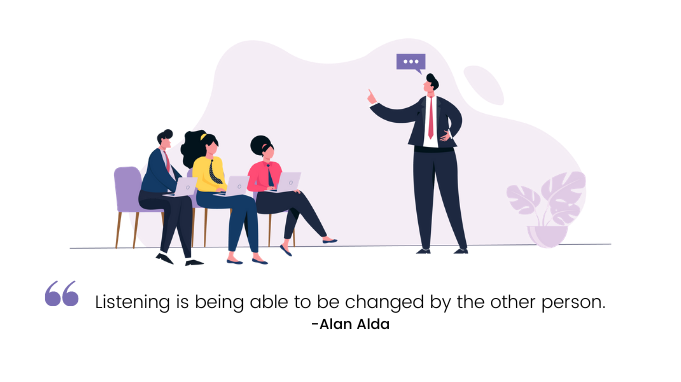
We rely on this type of listening the most in our everyday conversations. Comprehensive listening should be the bare minimum it simply requires basic language and vocabulary skills to understand what your speaker is saying. This is another one we start practicing from an early age. Picking up on someone’s feelings will help you determine their priorities and pain points, ultimately helping you make a sale. If you notice a prospect sounds particularly exasperated when discussing a certain topic, that’s your cue to jump in and explain how your product is uniquely suited to solve their problem. If somebody’s yelling at you in another language, for example, you may not know what they’re saying, but their volume and body language will give you a pretty good idea that they’re angry with you.Īs sales reps, we can use this type of listening to understand how our customers really feel. Discriminative listening relies on tone and inflection to understand the speaker’s intention and meaning. The most basic listening style, this is a skill we start practicing the moment we’re born. Speaking of customers, informational listening will be your friend when your prospects are discussing the specific issues they need you to solve. This will help you pick up on the nuances of your offerings and answer tough customer questions in the future. Sales reps should turn on their informational listening brains when learning about the products and services their company provides. This requires a lot of focus-you don’t want to miss any crucial details. Informational listening focuses more on the logic and critical thinking of what someone else is saying and less on the emotional aspect of it. This is the type of listening we use when we’re learning something new, especially something that’s important to us.

Let’s dive into each one and see how the seven listening styles can help you become a top salesperson. There are actually seven different listening styles, and you’ll need to know which to add to your toolbelt and which to remove if you want to be a cut (and an ear!) above the rest. And, the reverse is true-underperformers tend to take up most of the conversation (65 percent of it to be exact).īut listening isn’t just about not talking. For salespeople, being a good listener means closing more deals and meeting revenue goals-in fact, data from Gong shows the average top-performing B2B salesperson only speaks 43 percent of the time, letting their prospects speak 57 percent of the time.

Whether you’re on a sales call or a blind date, listening is everything.


 0 kommentar(er)
0 kommentar(er)
